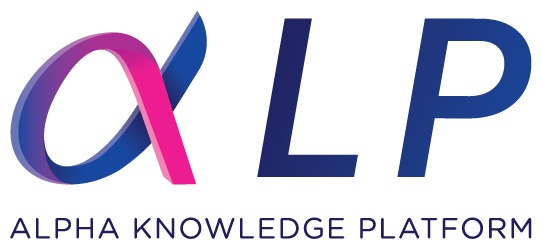TickerTape
Weekly Global Stablecoin & CBDC Update

This Week’s Stories
- US Crypto Week
- ECB Speech Calls for Swift Digital Euro Legal Framework
- BoE Governor Warns Banks
- GENIUS Act Analysis
- European Parliament to Discuss Digital Euro
- New Daily Stablecoin Settlement King
- Stablecoin Still Far From Mainstream
- GENIUS Act Stalled
- Citi to Launch Own Stablecoin?
- Snail Games Explored USD Stablecoin
- HM Treasury Publishes New Policy Paper
- Stablecoins Could Reshape US Treasury Markets
- U.S. House to Vote Again
- BoA Actively Working on Stablecoin Development
- BoE Design Note: Product Strategy
- BoE Design Note: Interoperability Models
- Morgan Stanley Actively Discussing Stablecoins
- DIGIT Pilot Update
- Digital Euro Progress Report
- All 3 “Crypto Week” Bills Pass
- ECB Call for Expressions of Interest
- Trump Signs GENIUS Act into Law
The U.S. House of Representatives officially launched “Crypto Week” on July 14, 2025, marking a historic moment for digital asset regulation. During this week-long initiative, lawmakers will vote on three landmark bills: the CLARITY Act to establish regulatory frameworks for digital assets, the GENIUS Act to create federal stablecoin regulations, and the Anti-CBDC Surveillance State Act to permanently ban a U.S. central bank digital currency. The GENIUS Act, having already secured bipartisan support in the Senate, is anticipated to proceed to a vote on Thursday morning. Meanwhile, the CLARITY Act is scheduled for a floor vote on Wednesday. If passed, the GENIUS Act would immediately go to President Trump’s desk for signature, potentially becoming the first major crypto regulatory law in U.S. history. The initiative represents Congress’s coordinated effort to establish America as the “crypto capital of the world” while providing regulatory clarity for the rapidly growing digital asset ecosystem.
Key Takeaways:
- House officially designates July 14-18, 2025 as “Crypto Week” for historic digital asset legislation
- Three major bills under consideration: CLARITY Act (Wednesday), GENIUS Act (Thursday), and Anti-CBDC Act
- GENIUS Act has already passed Senate 68-30 and would go directly to President Trump if House approves
- Represents most comprehensive federal crypto regulatory effort in U.S. history
- Aims to establish America as global leader in digital asset innovation and regulation
Why It Matters:
- Could provide long-awaited regulatory clarity that has hindered institutional crypto adoption
- Demonstrates bipartisan momentum for cryptocurrency legislation after years of regulatory uncertainty
- May influence global digital asset regulatory standards and international competitiveness
- Shows prioritization of private stablecoins over government-issued CBDCs in U.S. policy framework
- Could accelerate mainstream adoption of digital assets through clearer legal frameworks
European Central Bank Executive Board member Piero Cipollone addressed the European Parliament’s Committee on Economic and Monetary Affairs on July 14, 2025, urging lawmakers to expedite the digital euro’s legal framework. Cipollone emphasized that the digital euro’s primary purpose is to preserve cash benefits in the digital era by providing a digital form of central bank money. He warned that Europeans increasingly lack access to central bank money for digital transactions, which reduces payment system resilience, competition, and monetary sovereignty. The ECB executive stressed that this limitation ultimately restricts consumers’ freedom to choose how they pay. Cipollone argued that the digital euro would complement physical cash rather than replace it, addressing the growing digital payment needs while maintaining the euro’s legal tender status. The statement comes as the ECB continues its preparation phase for the digital euro project, with legislation needed before the Governing Council can make a final launch decision.
Key Takeaways:
- ECB Executive Board member urges European Parliament to accelerate digital euro legislation
- Digital euro positioned as necessary to preserve cash benefits in digital transactions
- Emphasis on maintaining monetary sovereignty and consumer payment choice
- Europeans currently lack access to central bank money for digital payments
- Digital euro would complement, not replace, physical cash
Why It Matters:
- Highlights urgency of European digital currency development amid global CBDC competition
- Demonstrates ECB’s commitment to maintaining monetary sovereignty against private digital currencies
- Shows European response to growing digitalization of payment systems
- Indicates potential timeline acceleration for digital euro implementation
- Reflects broader central bank concerns about losing monetary control to private payment systems
Bank of England Governor Andrew Bailey warned major global banks against issuing their own stablecoins in an interview published July 13, 2025, creating potential tension with President Trump’s administration’s pro-stablecoin stance. Bailey favored tokenized deposits over stablecoins. Tokenized deposits are digital forms of conventional bank money, unlike stablecoins, which necessitate ring-fenced reserves that cannot be utilized for lending. He warned that widespread stablecoin adoption could drain deposits from the banking system, reducing funds available for credit provision and potentially threatening financial stability. Bailey emphasized concerns about stablecoins’ impact on monetary policy transmission and the “singleness of money” principle. His position contrasts sharply with U.S. policy direction, where the GENIUS Act aims to enable broader stablecoin adoption. The governor’s comments reflect broader European regulatory caution toward private digital currencies, with both the UK and EU taking more restrictive approaches compared to the U.S. embrace of stablecoin innovation.
Key Takeaways:
- Bank of England Governor warns banks against issuing private stablecoins
- Prefers tokenized deposits that support lending over ring-fenced stablecoin reserves
- Concerns about stablecoins draining bank deposits and reducing credit availability
- Emphasizes risks to monetary policy transmission and financial stability
- Creates potential policy divergence with Trump administration’s pro-stablecoin stance
Why It Matters:
- Highlights growing global divide in stablecoin regulatory approaches
- Demonstrates central bank concerns about private digital currencies threatening traditional banking
- Shows tension between innovation and financial stability in digital asset regulation
- May influence other central banks’ positions on stablecoin development
- Reflects broader debate about role of private vs. public digital money
CNBC published an analysis on July 14, 2025, examining the potential impact of the GENIUS Act on cryptocurrency markets and investors as the House prepares to vote during “Crypto Week.” The analysis highlighted how the legislation could enhance mainstream stablecoin adoption by establishing clear regulatory frameworks and fostering market confidence. Currently dominated by Tether’s USDT and Circle’s USDC in what analysts describe as a “duopoly,” the stablecoin market could see increased competition as the GENIUS Act creates pathways for banks and other institutions to issue regulated stablecoins. The analysis noted that major banking institutions are preparing to launch their own stablecoins, potentially disrupting the existing market structure. While not all new entrants may succeed, the regulatory clarity could provide consumers with more choices and better-suited stablecoin products. The legislation’s emphasis on full dollar backing, audit requirements, and transparency measures could increase institutional confidence in stablecoin adoption for payments and financial services.
Key Takeaways:
- GENIUS Act could break current USDT-USDC duopoly in stablecoin market
- Banking institutions preparing to launch regulated stablecoins
- Regulatory clarity expected to increase institutional confidence and adoption
- Legislation emphasizes full dollar backing, audits, and transparency requirements
- Could provide consumers with more stablecoin choices and better-suited products
Why It Matters:
- Shows potential market transformation from regulatory clarity
- Demonstrates institutional interest in entering regulated stablecoin space
- Highlights competitive dynamics that may emerge from federal oversight
- Indicates pathway for mainstream financial institutions to adopt blockchain technology
- Reflects growing recognition of stablecoins’ role in future payment systems
The European Parliament’s Committee on Economic and Monetary Affairs (ECON) published its agenda for July 14-15, 2025, meetings, which included discussions on digital euro developments as part of its ongoing deliberations. The committee meetings, held in Brussels, addressed various monetary policy and financial system issues, including updates on the European Central Bank’s digital euro project. The agenda reflects the European Parliament’s continued engagement with digital currency policy as legislators work on the legal framework necessary for potential digital euro implementation. The timing coincides with increased global focus on central bank digital currencies and regulatory frameworks for digital assets, as demonstrated by simultaneous developments in the United States during “Crypto Week.” The committee’s discussions represent part of the broader European legislative process needed to enable the ECB’s Governing Council to make final decisions on digital euro launch, following completion of the current preparation phase.
Key Takeaways:
- European Parliament’s ECON committee agenda included digital euro discussions
- Committee meetings held July 14-15, 2025, in Brussels
- Reflects ongoing European legislative process for digital euro framework
- Timing coincides with global focus on CBDC and digital asset regulation
- Part of broader European response to digital currency developments
Why It Matters:
- Shows European Parliament’s active engagement with digital currency policy
- Demonstrates continued progress on digital euro legal framework development
- Reflects European commitment to maintaining monetary sovereignty in digital age
- Indicates coordination between ECB technical development and legislative processes
- Shows European response to global competition in digital currency development
Tron has emerged as a dominant force in digital payments, surpassing traditional fintech giants PayPal and Stripe in daily stablecoin transaction volume. The blockchain now processes over $21 billion per day, compared to PayPal’s $4.6B and Stripe’s $3.8B. This milestone underscores Tron’s growing role in global finance, particularly in the realm of stablecoins like USDT.
Since its launch, Tron has evolved from a content-sharing platform into a high-performance blockchain supporting over 318 million accounts and handling $19.6 trillion in total on-chain volume. Its architecture, based on Delegated Proof of Stake (DPoS), allows for near-zero transaction fees using bandwidth points instead of gas, making it highly scalable and cost-effective.
Tron’s infrastructure has made it the preferred network for USDT, with $80.7 billion of the stablecoin’s supply hosted on Tron, more than Ethereum. This has positioned Tron as a leader in digital dollar transfers, especially as stablecoins continue to grow in market cap and adoption.
Key Takeaways:
- Tron’s Daily Volume Surpasses Fintech Giants: Tron now processes over $21 billion in daily stablecoin transactions, significantly more than PayPal ($4.6B/day) and Stripe ($3.8B/day).
- Massive On-Chain Activity: Tron has handled $19.6 trillion in total on-chain volume. It supports 318 million+ accounts, with 186 million actively holding TRX. Daily transactions exceed 1 million, mostly driven by USDT (Tether).
- USDT Dominance on Tron: Over $80.7 billion of USDT’s circulating supply is on Tron, compared to $74.8 billion on Ethereum. Tron processes 3x more daily stablecoin volume than Ethereum.
- Low-Cost, High-Speed Architecture:Tron uses a Delegated Proof of Stake (DPoS) model. Transactions are nearly fee-free, using bandwidth points instead of gas fees. This makes it highly scalable and attractive for stablecoin transfers.
- Strategic Evolution: Originally launched in 2017 as a content platform, Tron pivoted to dApps and smart contracts. Acquired BitTorrent in 2018 and transitioned to Tron DAO governance in 2021.
Why it Matters:
- Blockchain vs. Traditional Finance: Tron’s performance highlights how blockchain networks are not just catching up to, but outpacing traditional fintech platforms in certain areas like digital payments.
- Stablecoin Infrastructure: As stablecoins become more central to global finance, Tron’s dominance positions it as a key player in the future of digital money.
- Cost Efficiency: Tron’s near-zero fees and high throughput make it ideal for cross-border payments, remittances, and DeFi applications.
- Adoption Signal: The scale of usage suggests growing institutional and retail trust in blockchain-based financial infrastructure.
Despite the technological promise of stablecoins, such as speed, low cost, and 24/7 availability, Mastercard’s Jorn Lambert argues they are not yet viable for everyday consumer payments. The main barriers are user experience, adoption, and integration into existing financial systems. Mastercard is positioning itself as a bridge between stablecoins and traditional finance, offering infrastructure like global merchant acceptance, security, and compliance. While stablecoins are mostly used for crypto trading today, Mastercard and others (like Visa, PayPal, and Circle) are working to make them more practical for real-world use. However, challenges like conversion costs, regulatory hurdles, and consumer friction remain.
Key Takeaways
- Stablecoin Tech ≠ Payment Readiness: Speed and programmability are not enough; usability, reach, and trust are equally critical.
- Mastercard’s Role as Infrastructure Provider: Mastercard aims to support stablecoins by offering its global network, compliance tools, and merchant access.
- Current Use Case is Mostly Crypto Trading: About 90% of stablecoin volume is tied to crypto markets, not consumer payments.
- Consumer Payments Face Friction: Using stablecoins for everyday purchases is still clunky and lacks a compelling value proposition.
- Stablecoins Seen as Prepaid Cards: They function more like stored-value wallets than dynamic payment tools.
- Regulatory Clarity is Coming: Pending U.S. legislation is drawing more institutional interest and could reshape the landscape.
- Banks Are Watching Closely: Financial institutions are evaluating stablecoins to avoid losing deposits to digital wallets.
- Global Implications: Governments are exploring digital currencies to avoid over-reliance on the U.S. dollar and foster innovation.
Why it Matters
- For Consumers: Stablecoins aren’t ready to replace cards or cash in daily life yet.
- For Businesses: Companies like Mastercard are laying the groundwork for future adoption.
- For Banks: There’s a risk of disintermediation if stablecoins become widely used.
- For Policymakers: Regulation will shape how stablecoins evolve and integrate into the economy.
- For Developers & Startups: There’s opportunity in solving the UX, compliance, and integration challenges.
On July 15, 2025, the U.S. House of Representatives failed to pass a procedural motion needed to advance three key pieces of cryptocurrency legislation during what Republican leaders designated as “Crypto Week.” The vote failed 196-223, with 13 Republicans joining all Democrats in opposition. The stalled legislation includes the GENIUS Act for stablecoin regulation, the CLARITY Act for digital asset market structure, and the Anti-CBDC Surveillance State Act. Conservative Republicans opposed the procedural vote because they wanted the bills combined into a single package rather than considered separately. This opposition came despite President Trump’s public pressure on Republicans to vote yes, reflecting internal GOP divisions over the legislative approach to digital asset regulation.
Key Takeaways:
- House procedural vote failed 196-223 on July 15, 2025, stalling three major crypto bills
- 13 Republicans joined Democrats in opposition despite Trump’s public support
- Conservative Republicans wanted bills combined into single package rather than separate votes
- GENIUS Act, CLARITY Act, and Anti-CBDC Surveillance State Act all affected
- Speaker Johnson indicated plans to continue negotiations and try again
Why It Matters:
- Demonstrates internal Republican divisions despite unified party control of government
- Shows potential challenges in passing Trump’s crypto agenda even with GOP majorities
- Highlights ongoing debate over legislative packaging versus individual bill consideration
- Could delay long-awaited regulatory clarity for digital asset industry
- Reflects broader tensions between procedural approaches and policy outcomes in Congress
Citigroup CEO Jane Fraser announced that the third-largest U.S. bank is contemplating launching its own stablecoin as part of its strategy to enhance digital payment solutions. Speaking to analysts during a post-earnings conference call, Fraser stated that Citi is actively engaged in tokenized deposits and exploring stablecoin reserve management and cryptocurrency custody services. The announcement came after Citigroup reported second-quarter earnings that exceeded Wall Street expectations, with the bank’s stock reaching its highest level since the 2008 financial crisis. Fraser emphasized that tokenized deposits present a valuable opportunity for the institution, reflecting growing institutional interest in blockchain-based financial services and digital asset integration.
Key Takeaways:
- Citigroup CEO Jane Fraser announced consideration of launching bank’s own stablecoin
- Bank actively exploring tokenized deposits, reserve management, and crypto custody services
- Announcement made during post-earnings call after exceeding Wall Street expectations
- Citi stock reached highest level since 2008 financial crisis following earnings report
- Reflects growing institutional adoption of blockchain technology in traditional banking
Why It Matters:
- Shows major traditional bank embracing stablecoin technology for digital payments
- Demonstrates institutional validation of blockchain-based financial services
- Could accelerate mainstream adoption of stablecoins in traditional banking sector
- Reflects competitive pressure from fintech companies and crypto-native firms
- Indicates potential disruption to traditional payment processing systems
Snail Games, a publicly-traded video game studio, announced that it is exploring the development of its own U.S. dollar stablecoin. The company is evaluating technical, legal, and financial aspects of stablecoin issuance and has retained George Cao, founder of crypto exchange AscendEX, as an external consultant. Snail has also engaged a crypto-focused law firm to navigate compliance challenges. The company’s stock jumped 20% on the announcement before closing 8% higher. Co-CEO Hai Shi described the stablecoin exploration as a natural evolution of the company’s innovation strategy, aimed at supporting blockchain-based game economies and player-driven marketplaces while enabling cross-border monetization without traditional payment rails.
Key Takeaways:
- Snail Games exploring U.S. dollar stablecoin development with external crypto expertise
- Company retained AscendEX founder George Cao as consultant and crypto law firm
- Stock jumped 20% on announcement before closing 8% higher
- Initiative supports blockchain-based game economies and player marketplaces
- Represents gaming industry’s growing interest in stablecoin integration
Why It Matters:
- Shows expansion of stablecoin interest beyond traditional financial services
- Demonstrates gaming industry’s exploration of blockchain-based payment solutions
- Reflects growing corporate interest in stablecoins amid regulatory clarity
- Could enable new monetization models for digital entertainment platforms
- Indicates potential for stablecoins in specialized industry applications
HM Treasury published a Policy Paper on Wholesale Financial Markets Digital Strategy, outlining the UK’s approach to driving digitalization across three key areas: market optimisation, market transformation, and technological innovation. The strategy includes commitments to remove paper from UK wholesale markets, drive forward share dematerialisation, and work with industry to identify paper processes for digitization. The government will explore distributed ledger technology (DLT) adoption and artificial intelligence integration to transform financial markets. The policy emphasizes collaboration with the Accelerated Settlement Taskforce and explores more effective wholesale market data sharing. This initiative represents the UK’s comprehensive approach to modernizing financial market infrastructure through digital transformation.
Key Takeaways:
- UK Treasury published comprehensive digital strategy for wholesale financial markets
- Strategy covers market optimization, transformation, and technological innovation
- Commitments include removing paper processes and advancing share dematerialisation
- Focus on distributed ledger technology and artificial intelligence adoption
- Collaboration with industry taskforces for automation and data sharing improvements
Why It Matters:
- Demonstrates UK’s commitment to maintaining competitive position in digital finance
- Shows government-led approach to financial market modernization
- Could influence international standards for digital financial infrastructure
- Reflects growing focus on DLT and AI in traditional financial services
- May accelerate adoption of digital assets in UK financial markets
Standard Chartered’s head of digital assets research, Geoff Kendrick, published an analysis on July 15, 2025, suggesting that stablecoins could begin reshaping U.S. Treasury markets and monetary policy once their market size reaches approximately $750 billion. The current stablecoin market stands at about $240 billion, but Kendrick expects it could more than triple by the end of 2026, driven by new issuers and legislation like the GENIUS Act. He noted growing consensus among industry players that this $750 billion threshold would be the tipping point where stablecoins begin influencing government debt issuance and Treasury market structure through sheer demand. The analysis highlighted that stablecoins require vast quantities of Treasury bills as backing assets, potentially affecting the shape of the U.S. Treasury yield curve.
Key Takeaways:
- Standard Chartered identifies $750 billion as threshold for stablecoin market impact on Treasury markets
- Current $240 billion market could triple by end of 2026 with regulatory clarity
- Stablecoins require large Treasury bill holdings as backing assets
- Could influence government debt issuance patterns and yield curve shape
- Analysis based on meetings with crypto firms, funds, and policymakers
Why It Matters:
- Provides concrete analysis of stablecoin market’s potential macroeconomic impact
- Shows growing recognition of stablecoins’ systemic importance in financial markets
- Highlights connection between crypto adoption and traditional fixed income markets
- Demonstrates institutional research focus on stablecoin market implications
- Could influence policymaker views on stablecoin regulation and oversight
The U.S. House of Representatives successfully passed a procedural vote 215-211 on July 16, 2025, to advance three major cryptocurrency bills after initially failing the previous day. The legislation includes the Senate-passed GENIUS Act for stablecoin regulation, the CLARITY Act for crypto market structure, and the Anti-CBDC Surveillance State Act to permanently ban central bank digital currencies. The breakthrough came after President Trump intervened with Republican holdouts on Tuesday evening, convincing key Freedom Caucus members to support the measure. House Freedom Caucus Chairman Andy Harris announced the group would vote in favor after securing an agreement to add stronger anti-CBDC provisions to the CLARITY Act. The GENIUS Act, having already passed the Senate, would go directly to Trump’s desk for signature if approved by the House, while the other two bills would need Senate approval before becoming law.
Key Takeaways:
- House voted 215-211 to advance three major crypto bills after Tuesday’s failure
- Trump personally intervened to secure support from Republican holdouts
- Freedom Caucus secured agreement to add anti-CBDC provisions to CLARITY Act
- GENIUS Act would go directly to Trump’s desk if House passes it
- No Democrats voted in favor of the procedural motion
Why It Matters:
- Represents historic moment for U.S. crypto regulation after years of uncertainty
- Demonstrates Trump’s influence over Republican lawmakers on crypto policy
- Could establish America as global leader in digital asset regulatory frameworks
- Shows prioritization of private stablecoins over government-issued CBDCs
- May accelerate institutional adoption through clearer legal pathways
Bank of America CEO Brian Moynihan announced on July 16, 2025, that the second-largest U.S. bank has been actively working on stablecoin development and expects to move forward with the initiative. Speaking during the bank’s quarterly earnings call, Moynihan stated that Bank of America has “done a lot of work” on stablecoin development but is still assessing market size and customer demand. The CEO indicated the bank would likely launch its stablecoin in partnership with other financial institutions and emphasized the need for regulatory clarity before proceeding. Moynihan’s comments follow similar announcements from JPMorgan Chase and Citigroup, suggesting major Wall Street banks are preparing to enter the stablecoin market. The timing coincides with Congress’s consideration of the GENIUS Act, which would establish a federal regulatory framework for stablecoins and could provide the legal clarity banks seek for market entry.
Key Takeaways:
- Bank of America has conducted significant preparatory work on stablecoin development
- CEO Moynihan confirmed expectation to move forward with stablecoin initiative
- Bank is assessing market size and customer demand before launch
- Plans to partner with other institutions for stablecoin rollout
- Regulatory clarity remains key requirement for market entry
Why It Matters:
- Demonstrates major traditional bank embrace of blockchain technology
- Shows institutional validation of stablecoins as legitimate financial instruments
- Could accelerate mainstream adoption of digital assets in traditional banking
- Reflects competitive pressure from fintech companies and crypto-native firms
- May signal broader transformation of traditional payment systems
The Bank of England published comprehensive design notes on July 16, 2025, outlining its emerging product strategy for a potential digital pound. The documentation details the Bank’s thinking on interoperability models for UK-based payments, emphasizing the importance of preserving the “singleness of money” while supporting innovation across the payments system. The design notes explore three different interoperability models, each involving trade-offs for users, participants, and the broader financial system. The Bank emphasized that a digital pound would be issued as a direct Bank of England liability, delivered through a public-private platform with intermediaries handling user-facing services. The notes stress that neither the Bank nor the Government would access users’ personal data through the core infrastructure, addressing privacy concerns central to public acceptance of a retail CBDC.
Key Takeaways:
- Bank of England released detailed design notes for digital pound interoperability
- Emphasizes preserving “singleness of money” while supporting payment innovation
- Explores three interoperability models with different trade-offs
- Confirms digital pound would be direct Bank of England liability
- Strong emphasis on privacy protection and data security
Why It Matters:
- Shows concrete progress on UK CBDC development and design considerations
- Demonstrates Bank of England’s commitment to privacy-preserving CBDC design
- Provides template for other central banks developing retail CBDCs
- Reflects ongoing global competition for digital currency leadership
- Indicates potential timeline acceleration for digital pound implementation
This exploratory design note outlines the Bank of England’s emerging thinking on domestic interoperability for a digital pound, focusing on seamless exchange with commercial bank deposits, cash and new digital monies. It presents three potential models: centralised interoperability via the digital pound platform (Model A), a small number of competitive intermediaries (Model B) and direct interoperability by each Payment Interface Provider (Model C), each model evaluating their trade-offs for users, participants and the wider financial system. The Bank’s preferred approach is a centrally provided deposit interoperability capability to ensure baseline connectivity, supplemented by other models over time. Findings from a technical proof of concept using the UK’s Faster Payment System demonstrate that existing rails can support digital pound–deposit interoperability without infrastructure changes.
Key Takeaways:
- Three interoperability models assessed: centrally provided (A), competitive intermediaries (B) and individual PIP provision (C), each with distinct trade-offs for cost, competition and privacy
- Preferred approach: a central deposit interoperability capability to guarantee universal, low-cost connectivity and reduce market fragmentation
- Technical proof of concept shows the Faster Payments rail can bridge digital pound and bank deposits using an interoperability module without modifying existing infrastructure
- Privacy-enhancing measures (pseudonymisation, encryption) can protect user data; Confirmation of Payee and Request to Pay functionalities are feasible with minimal changes
- To accommodate retail and merchant use cases, additional capabilities are necessary, including “certainty of fate” for real-time confirmation, batch payments support, and shared alias directories.
Why It Matters:
- Ensures the digital pound maintains the singleness of money, preserving equal value and trust across all sterling forms
- Promotes innovation and competition by reducing barriers for new participants to offer payment services without issuing money
- Leverages existing UK payment infrastructure to minimise costs and accelerate deployment, avoiding costly rail modifications
- Balances consumer protection and privacy by embedding user data safeguards in the core design
- Lays a foundation for future interoperability with emerging digital monies (stablecoins, tokenised deposits) and potential cross-border use cases
Morgan Stanley announced on July 16, 2025, that it is actively discussing stablecoin usage, according to Chief Financial Officer Sharon Yeshaya during the bank’s second-quarter earnings call. Yeshaya stated that the bank is “actively discussing” stablecoins and evaluating both the market landscape and potential use cases for their client base. However, she emphasized it’s still early to determine how stablecoins would integrate into Morgan Stanley’s business model compared to competitors’ offerings. The announcement follows similar stablecoin exploration confirmations from JPMorgan Chase, Citigroup, and Bank of America, indicating a broader trend of major Wall Street banks preparing to enter the digital asset space. The timing coincides with anticipated Congressional passage of stablecoin legislation that could provide regulatory clarity for institutional adoption.
Key Takeaways:
- Morgan Stanley CFO confirms active discussions about stablecoin usage
- Bank evaluating market landscape and potential client use cases
- Still early to determine specific business integration approach
- Follows similar announcements from other major Wall Street banks
- Reflects broader institutional preparation for digital asset adoption
Why It Matters:
- Shows unanimous interest from major Wall Street banks in stablecoin technology
- Demonstrates institutional validation of digital assets as legitimate financial tools
- Could accelerate mainstream adoption of blockchain-based payment systems
- Reflects competitive pressure to innovate in digital financial services
- May signal fundamental transformation of traditional banking infrastructure
The UK Government’s pilot update for the Digital Gilt Instrument (DIGIT) outlines progress since the Preliminary Market Engagement Notice (PMEN) closed in April 2025. DIGIT aims to apply distributed ledger technology (DLT) to the full lifecycle of sovereign debt issuance, fostering UK-based DLT infrastructure and market adoption. Initial design choices include a digitally native, short-dated gilt issued within the Digital Securities Sandbox, separate from existing debt programmes. Based on industry feedback, the pilot will test on-chain settlement of both securities and cash legs, DLT-based over-the-counter trade execution via smart contracts, interoperability with traditional and DLT markets, and enhanced transaction transparency. The update also signals future work on collateral mobility, DLT listings, secondary markets and collaboration with the Digital Markets Champion under the new Wholesale Financial Markets Digital Strategy.
Key Takeaways:
- DIGIT pilot builds on PMEN feedback to test DLT across gilt issuance, settlement and trading.
- On-chain settlement will include both security and cash legs, validating full DLT lifecycle.
- Smart-contract functionality will be trialled for over-the-counter trades, comparing DLT versus conventional markets.
- Emphasis on interoperability to prevent fragmentation between traditional and DLT platforms.
- DLT’s transparency features will be assessed for real-time visibility of ownership and transaction data.
Why It Matters:
- Demonstrates feasibility of DLT for core sovereign debt processes, potentially reducing settlement risk and cost.
- Catalyses UK DLT infrastructure growth and positions the UK at the forefront of digital finance innovation.
- Interoperability tests aim to integrate legacy market participants, avoiding siloed DLT ecosystems.
- Enhanced transparency could improve market confidence, regulatory oversight and secondary market liquidity.
- Findings will inform a cross-sector strategy under the Wholesale Financial Markets Digital Strategy to scale DLT solutions.
The European Central Bank (ECB) releases its third progress report on the digital euro’s preparation phase, marking continued advancements since November 2023. Progress has centered on developing the draft digital euro scheme rulebook, aimed at harmonizing payments and ensuring a user-friendly experience across the euro area. Design choices are being guided by contributions from over 30 organizations and intensive stakeholder engagement, including sessions with merchants, experts, and vulnerable customer groups, to ensure inclusivity.Around 70 market participants are actively testing features like conditional payments through a new innovation platform. The ECB is also ensuring the digital euro complements existing payment solutions, reflects legislative needs, and maintains high standards for security and privacy. Findings from ongoing technical tests and user research will be published in the third quarter of 2025.
Key Takeaways
- Extensive feedback from the Rulebook Development Group and market participants is improving the digital euro scheme rulebook.
- Approximately 70 market participants are testing technical features and use cases, including conditional payments.
- Direct engagement with diverse user groups ensures the digital euro will be inclusive and broadly accessible.
- The ECB is collaborating with legislative institutions to support robust digital euro legislation.
- Final design decisions are informed by technical tests, stakeholder feedback, and real-world user needs.
Why It Matters
- Lays groundwork for a consistent, interoperable digital euro across the euro area.
- Ensures that the digital euro’s design meets real user needs, strengthening public trust and adoption.
- Promotes collaboration between central banks, policymakers, the private sector, and consumer advocates.
- Advances legislative efforts to bring a secure, privacy-conscious digital currency closer to reality.
- Helps modernize Europe’s payments landscape, maintaining competitiveness and resilience in a changing financial ecosystem.
The U.S. House of Representatives passed three landmark cryptocurrency bills on July 17, 2025, after a dramatic “Crypto Week” marked by internal Republican divisions and last-minute negotiations. The GENIUS Act passed 308-122 with bipartisan support, heading directly to President Trump for signature. The CLARITY Act passed 294-134, establishing regulatory frameworks for digital asset markets and transferring primary oversight from the SEC to the CFTC. The Anti-CBDC Surveillance State Act passed 219-210, permanently banning the Federal Reserve from issuing a central bank digital currency. The legislation faced delays when 13 Republicans initially opposed the bills, demanding stronger anti-CBDC provisions. Trump personally intervened to secure GOP support through private meetings and negotiations. The votes represent the most significant cryptocurrency regulatory achievement in U.S. history, fulfilling Trump’s campaign promise to establish America as the “crypto capital of the world.” Trump to sign them into law.
Key Takeaways:
- House passed GENIUS Act (308-122), CLARITY Act (294-134), and Anti-CBDC Act (219-210) on July 17, 2025
- GENIUS Act received overwhelming bipartisan support with over 100 Democrats joining Republicans
- CLARITY Act transfers primary digital asset oversight from SEC to CFTC
- Anti-CBDC Act permanently bans Federal Reserve from issuing central bank digital currency
- Trump personally intervened to secure Republican support after initial opposition from 13 GOP members
- Represents most comprehensive cryptocurrency regulation in U.S. history
Why It Matters:
- Establishes United States as global leader in digital asset regulatory frameworks
- Provides long-awaited regulatory clarity that could accelerate institutional cryptocurrency adoption
- Demonstrates Trump’s significant influence over Republican cryptocurrency policy
- Shows bipartisan momentum for digital asset legislation despite political divisions
- Creates framework for safer consumer participation in cryptocurrency markets
- Reflects shift from enforcement-based to legislative approach to crypto regulation
The Eurosystem has issued a call to financial market stakeholders to join the Pontes market contact group, supporting active market dialogue around the Pontes project—an initiative to enable settlement of distributed ledger technology (DLT) transactions in euro using central bank money. The group will advise the Eurosystem on user requirements, testing, and market readiness for the Pontes pilot, which is expected to commence in October 2025. Building on successful early work with new settlement technologies, the Pontes project provides a short-term, pilot offering for wholesale euro DLT settlement, while a parallel long-term track (“Appia”) explores deeper infrastructure integration. Applications are due by 29 August 2025. The new group will report to the ECB Market Infrastructure Board, bringing together market participants, national central banks, and other relevant actors to ensure robust project delivery and industry alignment.
Key Takeaways:
- Eurosystem invites market participants to help shape the Pontes project, settling DLT transactions in euro central bank money.
- Pontes market contact group will advise on requirements, testing, and market readiness starting October 2025.
- Part of a two-track strategy: “Pontes” for short-term/pilot solutions, “Appia” for long-term DLT settlement infrastructure.
- Application deadline for the group is 29 August 2025.
Why It Matters:
- Advances the use of DLT and central bank money settlement for wholesale financial transactions in the euro area.
- Promotes industry collaboration and feedback in the development of next-generation financial market infrastructure.
- Addresses market demand for secure, efficient on-chain settlement with central bank-grade security and stability.
- Ensures the Eurosystem’s solutions evolve in step with technological innovation and market needs.
On July 18, 2025, President Donald J. Trump signed the GENIUS Act into law, marking the United States’ first federal regulatory framework specifically for payment stablecoins—digital assets pegged to the U.S. dollar or short-term Treasuries. The bipartisan legislation requires 100% reserve backing for stablecoins, monthly public disclosures of holdings, and prohibits misleading marketing regarding government backing or insurance. It aligns state and federal rules, mandates strict anti-money laundering and sanctions compliance, and prioritizes consumer claims during issuer insolvency. The law shifts oversight of stablecoins from the SEC and CFTC to banking regulators, and aims to strengthen the U.S. dollar’s global reserve status by driving demand for U.S. Treasuries. President Trump described the Act as solidifying America’s leadership in digital assets and fulfilling his pledge to make the nation the “crypto capital of the world.”
Key Takeaways:
- Establishes first-ever federal regulatory system for stablecoins.
- Requires 100% liquid asset backing and strict reserve disclosures.
- Prohibits stablecoin issuers from misleading claims about federal backing or insurance.
- Aligns state and federal regulation, centralizes oversight with banking regulators.
- Mandates anti-money laundering and sanctions compliance for issuers.
- Stablecoin holders’ claims take precedence in insolvency cases.
- Intended to bolster U.S. dollar dominance and attract investment in digital assets.
Why It Matters:
- Provides regulatory clarity, likely boosting confidence and stability in U.S. digital asset markets.
- Protects consumers through transparency, marketing restrictions, and prioritized claims.
- Seeks to maintain U.S. financial leadership by encouraging digital asset innovation while reinforcing the dollar’s global status.
- Mandated compliance measures address national security, countering illicit finance risks.
- Signals a major shift in U.S. financial regulation with possible global impact for stablecoin and crypto markets.
Powered by






